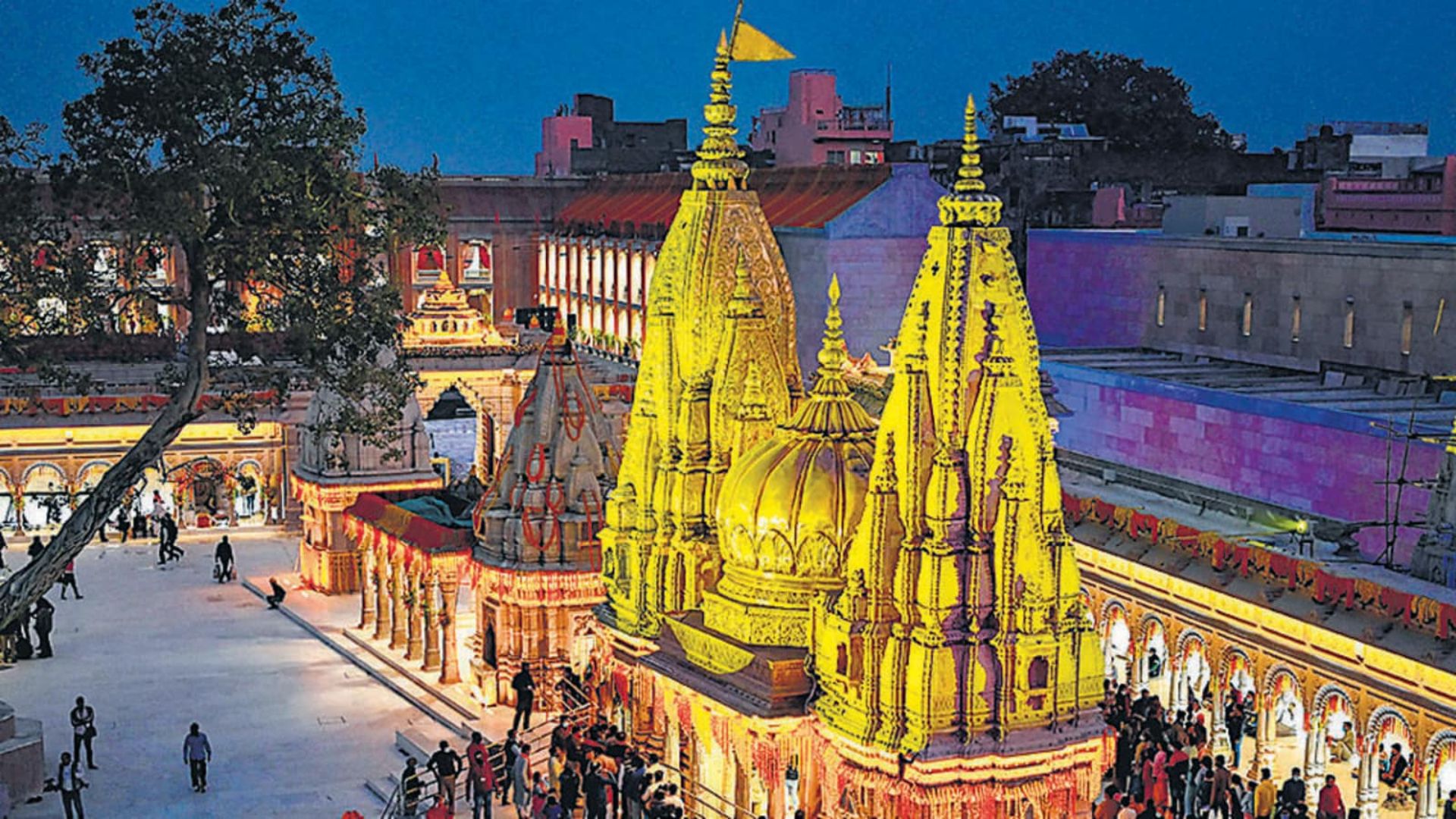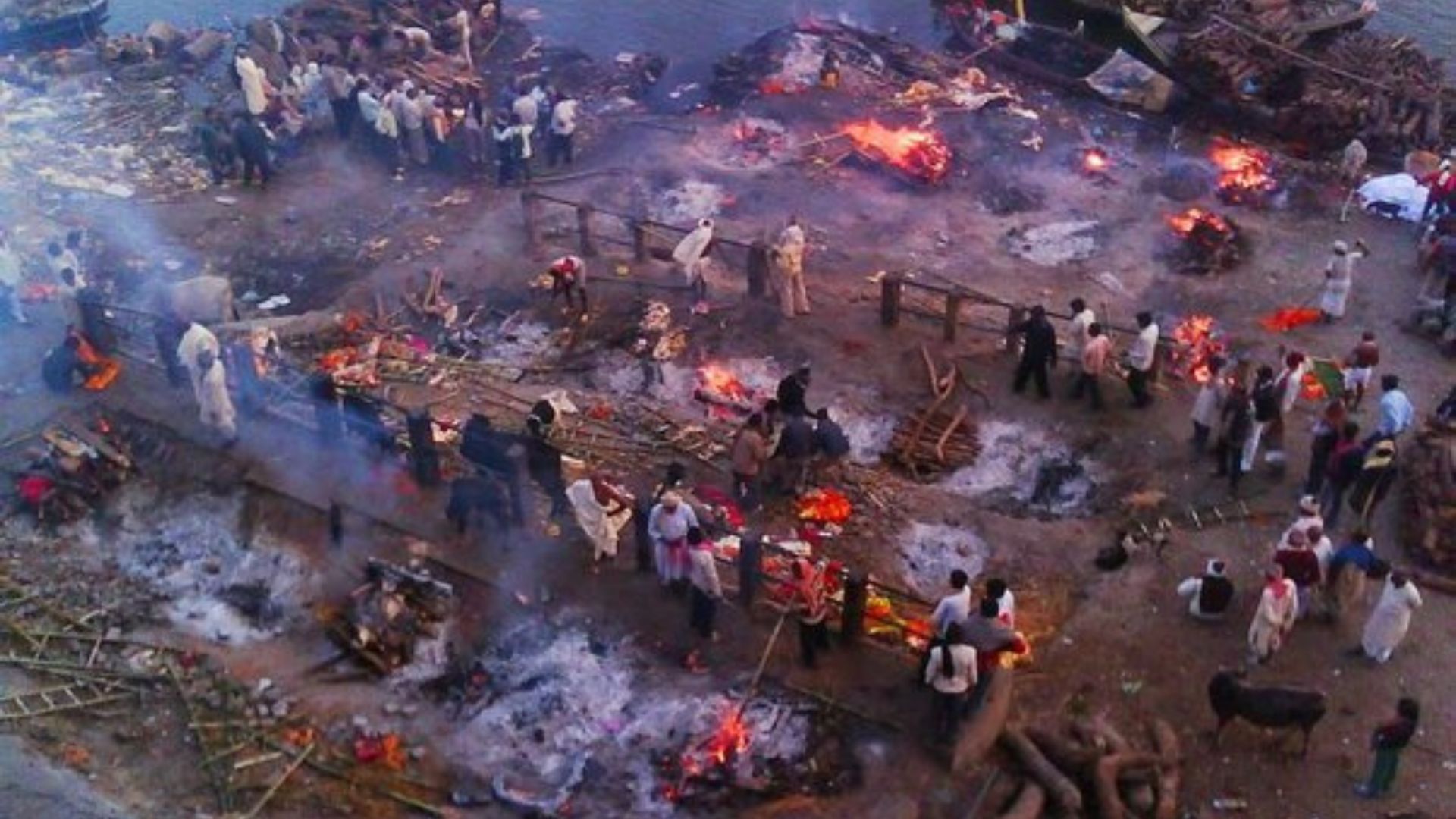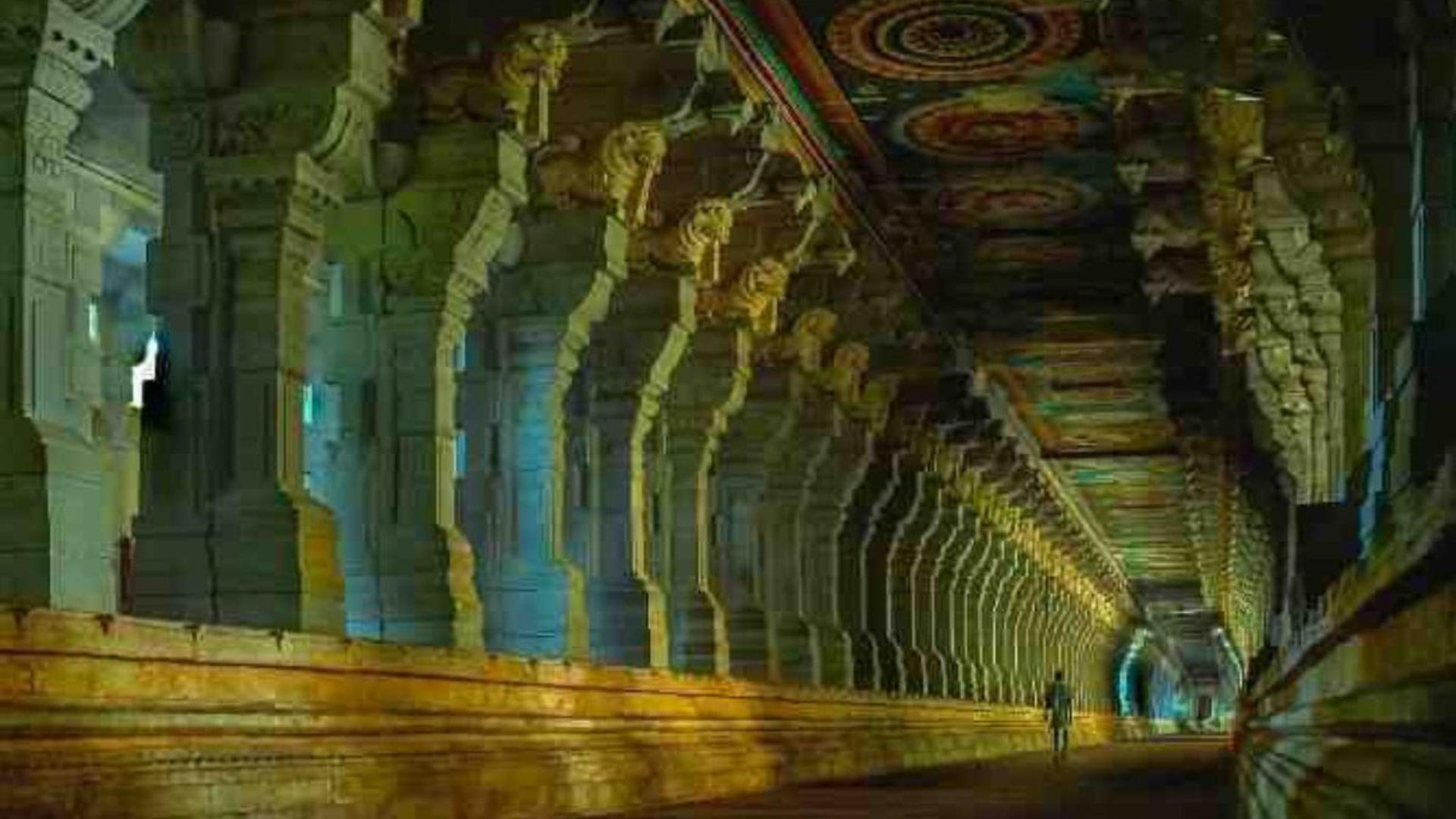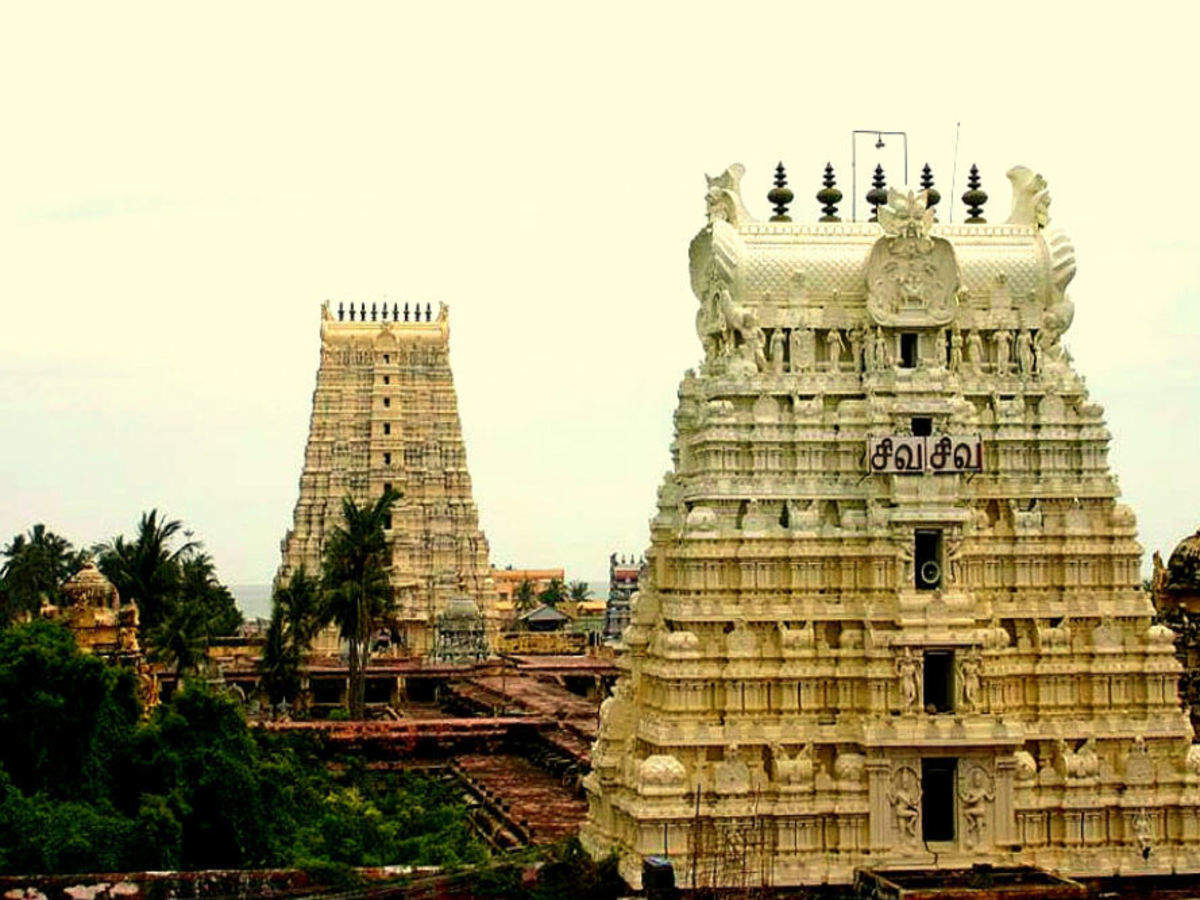India, the Punyabhoomi is home to great saints, myths, traditions, and culture. It is abundantly rich in holy and spiritual places whose practices remain intact even in modern times. Every spiritual and Holy place is unique, with its own set of practices and guidelines that they follow diligently. People all over India undertake pilgrimages to various holy sites and shrines. One of the most famous Yatra that most people long for is the pilgrimage to Varanasi - Kashi Yatra. But, the Kashi Yatra always begins and ends at Rameshwaram.
Kashi is a holy place in northern India, while Rameshwaram is an equally divine place in the south. These two places are the oldest pilgrimage shrines located about 3000 km apart. But in ancient times, people still traveled this distance and went on pilgrimages to these two temples diligently. What is the connection between these two shrines? Why does one have to travel thus far to complete the Yatra? What is the reason behind these beliefs? Come, let us explore and unearth the answers to the mystery together.
KASHI

Kashi, or Varanasi, is one of the oldest cities in the world. Kashi is the place where Lord Shiva lived along with his wife, Goddess Parvathi. After their marriage, they lived in Kailash and visited Kashi during Winter. Lord Shiva loved the ambiance and reverberations of Kashi that he wanted to live here permanently. During this time, King Divodas was ruling Kashi, and fearing he would lose importance, he did deep penance. Lord Brahma granted him a boon that wherever the king reigned, no God or Goddess would set foot into it. Lord Shiva was upset and angry that he could not visit his favourite place - Khasi.
To persuade King Divodas and to change his mind, Lord Shiva sent the Ganas, Yoginis, Surya Bhagavan, and Lord Brahma. But, all of them, seeing the divinity and splendour of the city of Khasi, stayed back and never returned to Lord Shiva. Finally, He sent Lord Vishnu to Khasi. Lord Vishnu met the king and gave him the Gnana Upadesha, and the King Divodas attainted mukthi. He then went to Kailash and invited Lord Shiva to live in Khasi. Hence, Lord Shiva settled down in Khasi.
The modern city of Khasi is situated on the banks of the holy river Ganga in Uttar Pradesh. Although Kashi is famous for many temples, it is synonymous with - The Kashi Viswanath Temple. The Kashi Viswanath temple is an ancient temple that is one of the 12 Jyotirlingas. (Jyothirlingas are potent places where Lord Shiva appeared in the form of light). This temple stands on the western banks of the river Ganga and is one of the holiest shrines in the world.
Vishwanath means - The ruler of the world. Many great saints like Adi Sankaracharya, Tulasidas, Sri Ramakrishna Paramahamsa, and Swami Vivekanandha have visited the city and have had the Darshan in this temple.
The Khasi Viswanath temple had been demolished many times (by the Mugal invaders) as early as 1194 AD. Qutub-ud-din-Aibak razed the temple. The Hindus consecrated the temple again. Later, Aurangazeb razed the temple and burnt it in 1669. He also constructed a mosque in its place. Every time the Kashi Viswanath temple was demolished, it got constructed again. The current structure was built on the adjacent site by Maratha Queen Rani Ahalya Bai Holkar. There is a well inside the temple complex called Gyanvapi - the well of wisdom. It is where the Shiva Linga was hidden inside (this well) when the Mughals came to demolish this temple.

The temple's legend goes that a fight broke out between Lord Vishnu and Lord Brahma concerning who was superior. Lord Shiva appeared before them in the form of an endless pillar /column of light that pierced the three worlds. Lord Shiva declared that the one who can see the beginning or end of the light is superior. Lord Vishnu took the form of a Boar and searched in the depths of the world while Lord Brahma took to the skies. Lord Brahma could not find the point of origin and cunningly lie to Lord Shiva. Lord Shiva was enraged by this act and cursed Lord Brahma. To this day, Lord Brahma is not worshipped during celebrations. But Lord Vishnu is revered and adored forever.
Varanasi is also a famous place for cremations as people believe that death in Khasi is auspicious and holy. People believe it gives Moksha - freedom from the cycle of death and rebirth. Manikarnika Ghat in Varanasi is the most famous place for cremation ceremonies. Many people also perform Pinda Dhanam and other ceremonies here. Many Purohits are available at the ghats who do proper poojas and rituals here.
The devotees believe that when they undertake the pilgrimage to Khasi they attain Moksha. To complete this pilgrimage, they return to Rameshwaram with a pot of holy water from the river Ganga.
RAMESHWARAM

Rameshwaram is an equally famous pilgrimage destination in southern India. It is the starting spot of the floating bridge, built by Lord Rama and his Army troops lay here. Sri Lanka is just 50 km away from this point.
According to the legends, Lord Rama and Lakshmana waged war against the Evil king Ravana ( a Shiva Bhakt) and, in the process, killed many lives during the battle to save Sita. After Rama won and rescued Sita, he returned to Rameshwaram ( India). Lord Rama wanted to get rid of the sins of killing many lives. He dug 22 wells, and out of them sprang the holy waters - called the Theerthams. Lord Rama took a dip in the waters of all the 22 wells, and it purified him of all his sins.
Lord Rama also wanted to consecrate a mighty temple of lord Shiva and requested his confidant, Hanuman, to fetch a powerful Shivalingam from the holy city of Varanasi (Kashi). However, Hanuman could not reach Rameshwaram on time with the Shivalingam. Lord Rama had to end his rituals on the auspicious time with the Shivalinga made by his wife, Sita, out of the sand from the beaches of Rameshwaram. Hanuman arrived later with the Viswanathar lingam from Kashi. Lord Rama also consecrated this Lingam at Rameshwaram. Currently, both the Shivalingams are present in the Rameshwaram temple, and both are worshipped in the temple. This is one of the important connections between the two divine kshetras.
THE KASHI - RAMESHWARAM PILGRIMAGE

The Kashi - Rameshwaram Pilgrimage is undertaken for many reasons. Some take up the Yatra to appease their forefathers, some perform the last rites of their beloved ones, and for some, it is a divine experience. No matter the reason, This Yatra starts and ends at Rameshwaram.
The devotees undertaking this Yatra first visit Lord Ramanathaswamy at Rameshwaram. They take a holy dip in the sea (theertham) to purify their sins before heading into the temple for Darshan. They also take a holy dip in the temple tanks present there. There are 64 temple tanks in total, out of which 22 are present inside the temple (some people prefer a dip in all the 64 tanks and some in 22 tanks). People also perform rituals for their ancestors (who have passed) on the seashore and dissolve the sesame balls before collecting sand from the shore. They make 3 Lingams out of the sand collected and, after rituals, dissolve 2 of them and take the final Shiva Lingam with them to Kashi.
On reaching Kashi, the devotees head to the holy spot - Triveni Sangam. Here, after rituals, the devotees dissolve the Shiva Lingam from Rameshwaram. They then visit Lord Viswanath to collect the water from River Ganga before heading back. The devotee then stops at Ramanathaswamy temple at Rameshwaram and offers the Ganga water to the Lord ( before distributing it to the near and dear ones). Now the pilgrimage is complete, and the devotee can go home.
KASHI - TAMIL SANGAM - CELEBRATING THE ANCIENT LINK
Kashi - the divine capital of the world, has had many saints gravitate toward it. Out of the great scholars and saints, there were many saints, particularly from Southern India, who visited, lived, and established mutts at Varanasi.
Saint Adi Sankarachariyar loved Kashi and composed the Kashi Panchakam on the divinity of Varanasi. A Pandiya king - Parakrama, visited the holy city of Varanasi and was awestruck by its divinity. He wanted to construct a Shiva temple in southern India and, hence brought a Shiva Lingam from Kashi and consecrated the temple, Kasi Viswanathar temple at Tenkasi. Tenkasi means - Kashi of the south. Tamil poet and freedom fighter Sri. Subramania Bharathi was also attracted to Kashi and lived there for a few years.
Recently, the Government of India organized a month-long Kasi - Tamil Sangam in November 2022. This is organized to strengthen and revive the ancient, cultural, and spiritual link between these two holy places. The IIT Madras and Banares Hindu University are the knowledge partners, and it aims to strengthen the links by bringing the people closer to share their knowledge, culture and practices and to learn from each other. It's to ring in the spirit of "Ek Bharat Shreshtha Bharat."
 I am Vaishnavi Gurusankar, a passionate educator, a wife and a mother. I have over a decade of experience as an educator and have been closely working with teachers and children of all ages. I am also an active parenting blogger and founder of Magical Unicorn, an exclusive parenting blog founded on Indian ethos, values and stories at its core.
I am Vaishnavi Gurusankar, a passionate educator, a wife and a mother. I have over a decade of experience as an educator and have been closely working with teachers and children of all ages. I am also an active parenting blogger and founder of Magical Unicorn, an exclusive parenting blog founded on Indian ethos, values and stories at its core.
NEXT ARTICLE